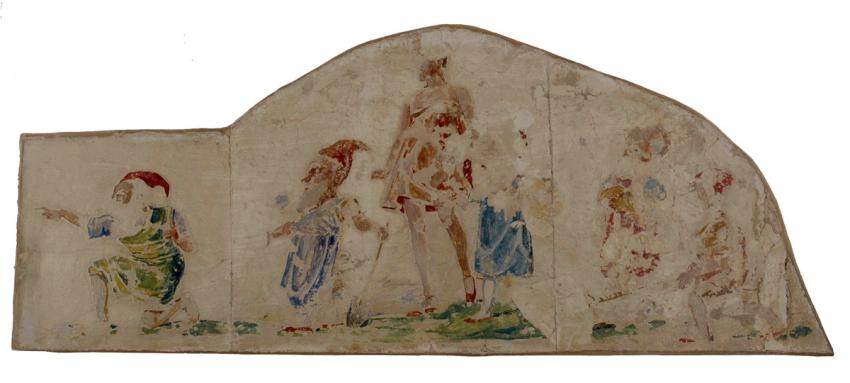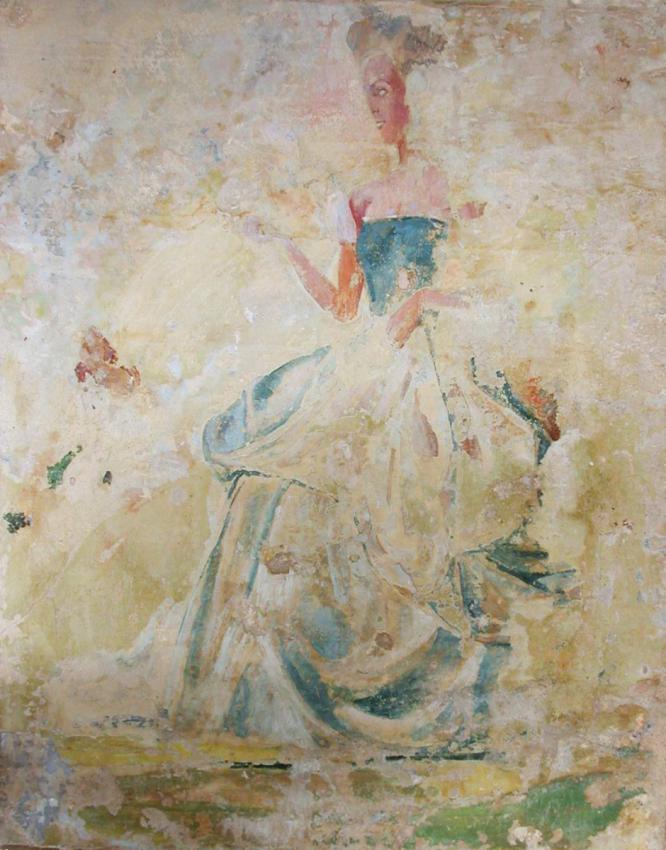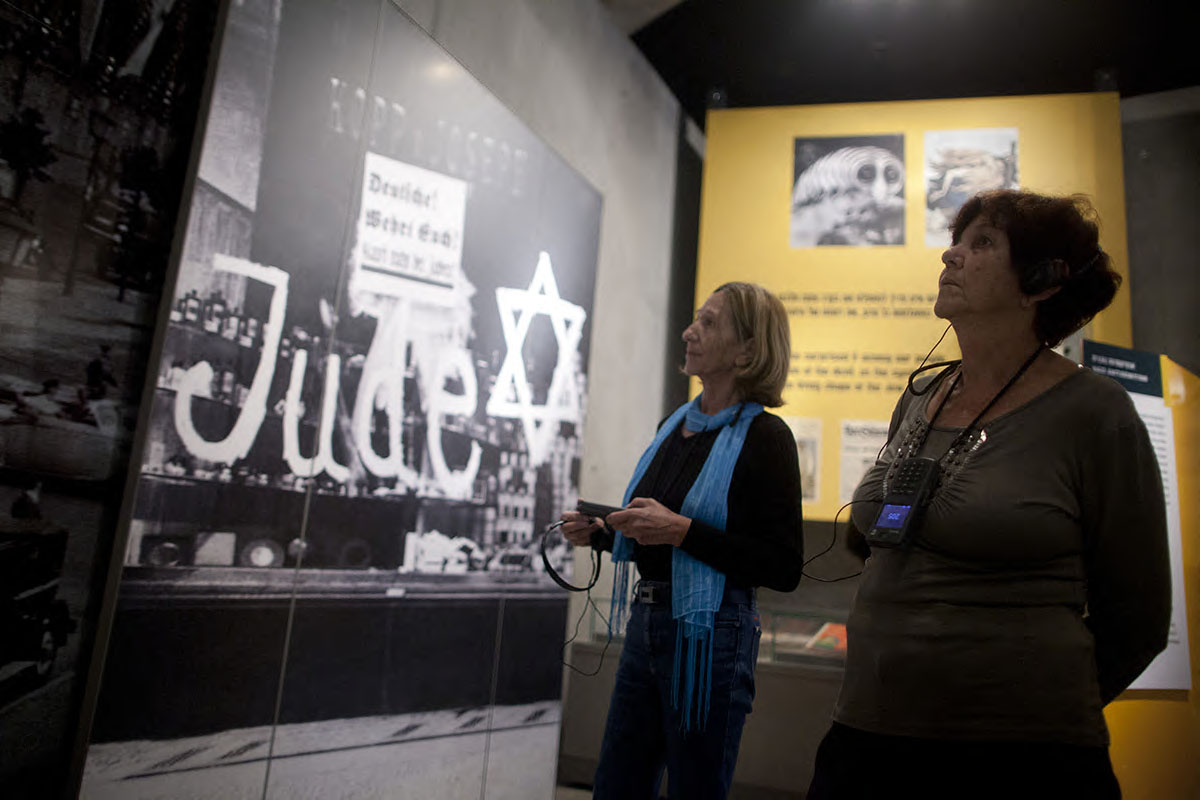
Loan of the Drohobychyna Museum, Ukraine (© Marek W. Podstolski)


Fresco secco
Collection of the Yad Vashem Art Museum, Jerusalem
Loan of the Drohobychyna Museum, Ukraine

Sunday to Thursday: 09:00-17:00
Fridays and Holiday eves: 09:00-14:00
Yad Vashem is closed on Saturdays and all Jewish Holidays.
Entrance to the Holocaust History Museum is not permitted for children under the age of 10. Babies in strollers or carriers will not be permitted to enter.

Loan of the Drohobychyna Museum, Ukraine (© Marek W. Podstolski)


Fresco secco
Collection of the Yad Vashem Art Museum, Jerusalem
Loan of the Drohobychyna Museum, Ukraine

On the evening of 30 June 1941, the town of Drohobycz (in the Lwow district in Poland, now Drohobych in Ukraine) was conquered by the Germans, and a campaign of abuse and murder of the Jews began.
Serving at Gestapo headquarters in the town was SS Hauptscharführer Felix Landau, who was assigned responsibility for enlisting forced labor from the ghetto’s populace. Landau ordered the Jewish artist and writer Bruno Schulz to decorate the walls of the local riding school.
With the arrival of his children at Drohobycz, Landau instructed Schulz to decorate the walls of the nursery at his home, where he lived with his lover, with images from popular fairytales. Thus, in late 1941 or early 1942, Schulz arrived daily at the “Villa Landau” in order to complete the work, in the hope that his assignment would save him from deportation and death.
The discontinuous fragments, spread over three walls in a small room, reveal an array of fairytale heroes familiar to all: a queen or princess in an evening gown fit for a ball, in shades of greenish aquamarine, apparently Cinderella; the figure of Snow White in a short dress, showing her legs adorned with red shoes, accompanied by five dwarves; and finally, a carriage driver holding the reins to two splendid horses, from the story of Cinderella.
But instead of simply decorating the nursery for the children of the SS Hauptscharführer, Schulz created, with sensitivity, ingenuity and courage, a personal memorial room for himself, his family and his community. Thus in the depiction of Snow White, the bearded dwarf holding a shovel to Snow White’s right is in fact an image of Bruno’s father, Jakub, whose facial features are recognizable from many of his surviving depictions. Bruno was highly attached to his father, who was a central protagonist in many of his short stories.
The carriage driver is none other than the artist’s self-portrait. The motif of carriage and driver is a repeated theme in both Schulz’s graphic and literary works, reflecting his belief that men should take the role of servant to their princesses. This time though, the carriage driver is not wearing his customary wizard’s hat, but is helmeted, as Schulz enlists himself to his own last battle – his attempt to flee.
Thus, by virtue of his internal, spiritual world, the crazed genius from Drohobycz bequeathed us one of the boldest and most moving examples of spiritual resistance during the Shoah. This resistance, however, did not avail him against the pistol of SS Oberscharführer Karl Günther, who shot him in the back of the head on “Bloody Thursday,” 19 November 1942. With close to two hundred fellow Jews from his beloved town of Drohobycz, Schulz was buried in the Jewish cemetery that same night; his last self-portraits were left on the villa walls.
Some 60 years after Schulz decorated the “Villa Landau,” his wall paintings were rediscovered. The display of the paintings at Yad Vashem’s Museum of Holocaust Art was inaugurated on 20 February 2009, in the presence of Ukrainian Deputy Minister of Culture and Tourism Vladislav Kornienko, and celebrated Israeli author David Grossman.
Addressing the audience, Grossman described how Schulz’s genius had been an inspiration to his own literature:
“When I finished reading his compilation of stories [Cinnamon Shops; Sanatorium Under the Sign of the Hourglass], I felt that Bruno Schulz had given me, for the first time, the key to writing about the Shoah – not about death nor about destruction, but, in truth, about life itself.”
First published in Yad Vashem Jerusalem magazine, #53, April 2009

Thank you for registering to receive information from Yad Vashem.
You will receive periodic updates regarding recent events, publications and new initiatives.

"The work of Yad Vashem is critical and necessary to remind the world of the consequences of hate"
Paul Daly
#GivingTuesday
Donate to Educate Against Hate


Worldwide antisemitism is on the rise.
At Yad Vashem, we strive to make the world a better place by combating antisemitism through teacher training, international lectures and workshops and online courses.
We need you to partner with us in this vital mission to #EducateAgainstHate
The good news:
The Yad Vashem website had recently undergone a major upgrade!
The less good news:
The page you are looking for has apparently been moved.
We are therefore redirecting you to what we hope will be a useful landing page.
For any questions/clarifications/problems, please contact: webmaster@yadvashem.org.il
Press the X button to continue



